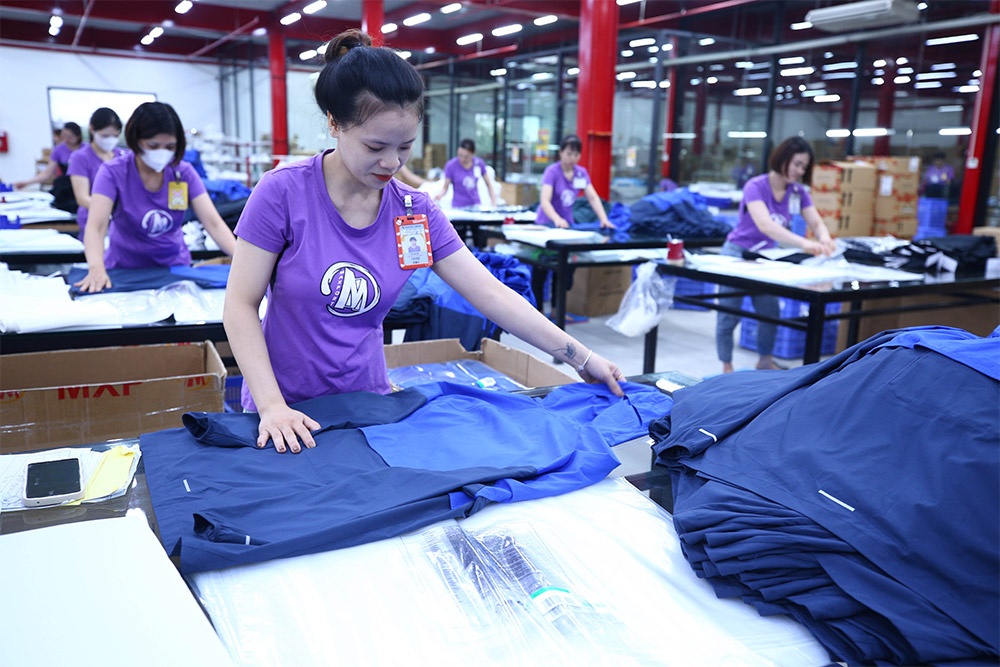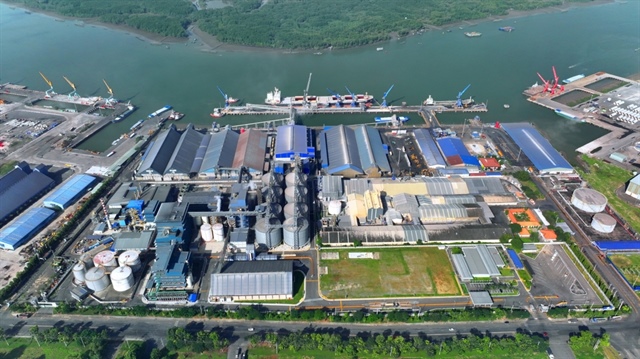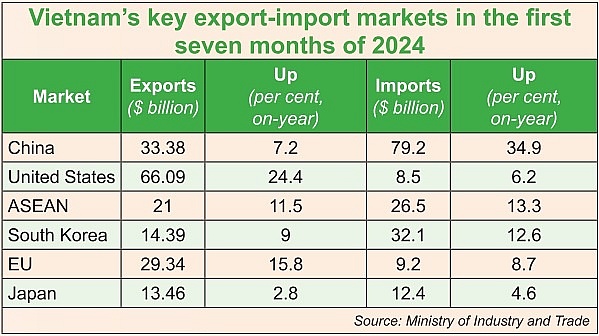Domestic production illustrates resilience
Domestic production illustrates resilience
Domestic industrial production has continued its recovery trend, reflecting the government’s pro-business policies proving productive and its efforts to generate more employment.

According to the Ministry of Industry and Trade’s (MoIT) official report on industrial performance for the first seven months of this year, Vietnam’s industrial production has continued to expand, driven by increasing demand both domestically and internationally.
The index of industrial production (IIP) rose by 2.84 per cent on-year in 2023. The growth accelerated to 5.7 per cent in the first quarter of this year, and further to 7.7 per cent in the first half. Notably, the index of industrial production (IIP) surged by 11.2 per cent on-year in July, bringing the cumulative seven-month growth rate to 8.5 per cent. This compares favourably to the same period last year, when the IIP recorded a 0.8 per cent decline.
Significantly, July’s IIP figures showed robust growth across key sectors compared to the same period last year: a 13.3 per cent increase in the manufacturing and processing industry, nearly 10 per cent in the electricity production and distribution industry, and a 12.1 per cent rise in the waste and wastewater management and treatment sector.
“Building on the recovery trend since late 2023, Vietnam’s industrial production continues to follow a positive trajectory, signalling the beginning of a new growth phase for the economy,” said Deputy Minister of Industry and Trade Phan Thi Thang.
This improvement is attributed to a steady increase in new orders over the past four consecutive months, the MoIT highlighted. According to S&P Global, production output in July surpassed that in June, reaching the highest level since 2011. For instance, in Ho Chi Minh City, the IIP for July increased by 9.6 per cent on-year, with the manufacturing and processing industry up by 13.4 per cent, while inventory levels dropped by 17.8 per cent compared to the same period last year.
The General Statistics Office’s (GSO) Q2 survey on manufacturing and processing enterprises released last month revealed that, compared to Q1, 28.8 per cent of firms reported an increase in export orders, while 49.6 per cent indicated stable orders. Looking ahead to Q3, 33.1 per cent of enterprises expect a rise in orders, and 50.6 per cent predict stability. Only 16.3 per cent foresee a decline in export orders.
In the first seven months of this year, total export turnover reached an estimated $227 billion, up 15.7 per cent on-year.
According to the GSO, business confidence has been gradually recovering. During this period, over 95,200 new businesses were established, with registered capital totalling $35.6 billion – up 6.3 and 2.4 per cent, respectively, on-year.
Moreover, nearly 44,300 businesses resumed operations, reflecting a 4.7 per cent increase on-year. This brought the total number of newly established and reactivated enterprises to nearly 139,500, a 5.8 per cent increase on-year. On average, nearly 20,000 enterprises commenced or resumed operations each month.
“These figures underscore the resilience of the business community amid growing challenges,” the GSO commented. “They also reflect the government’s significant efforts to support enterprises, as authorities at all levels have rigorously implemented government resolutions aimed at achieving the highest possible outcomes. This has helped maintain a positive socioeconomic trend, laying a solid foundation for the coming months and quarters.”
In a resolution following the government’s July meeting on the national socioeconomic situation, further regulatory improvements were mandated, with a focus on enhancing administrative reform and creating a more transparent and conducive business and investment environment.
Relevant authorities have been instructed to review and amend all relevant regulations and address legal obstacles to mobilise all possible resources, both domestic and foreign, for national development. The resolution also called for the resolution of any contradictory or overlapping legal documents.
“More dialogues must be organised to assist enterprises in overcoming challenges, alongside increased anti-corruption efforts, the development of e-government and e-society, and the promotion of cashless payments across all sectors,” Prime Minister Pham Minh Chinh stressed.
In the first half of 2024, 168 business regulations and 247 administrative procedures were simplified or eliminated, while nearly 140 officials and 1,200 state officers faced disciplinary actions.
According to the GSO, the push for administrative reform has contributed to increased employment. In the first seven months of this year, nearly 600,400 workers were newly employed by enterprises, reflecting a 2 per cent increase on-year.
Last year, Vietnam’s population reached approximately 100.3 million. The labour force aged 15 and above stood at 52.4 million, an increase of 666,500 from the previous year, with the labour force participation rate rising to 69 per cent, up 0.3 per cent on-year.
The government has tasked the Ministry of Labour, Invalids, and Social Affairs with finalising draft amendments to the Law on Employment, which are scheduled for review during the National Assembly’s next session in October and November.
The new law aims to enhance the quality of the workforce, offering greater support in areas such as insurance, employment opportunities, access to loans, working conditions, and connectivity between educational institutions and enterprises to boost labour productivity.
The World Bank has cautioned that for Vietnam to sustain its economic growth, it must urgently improve productivity, which remains relatively weak. “Productivity growth is crucial for sustaining Vietnam’s economic miracle. Although Vietnam’s labour productivity has grown by about two-thirds since 2010, outpacing all its regional peers, largely due to improvements in the business environment, enhanced human capital, and substantial foreign direct investment inflows, productivity levels remain well below those of its peers,” the World Bank noted in a report last month.



























